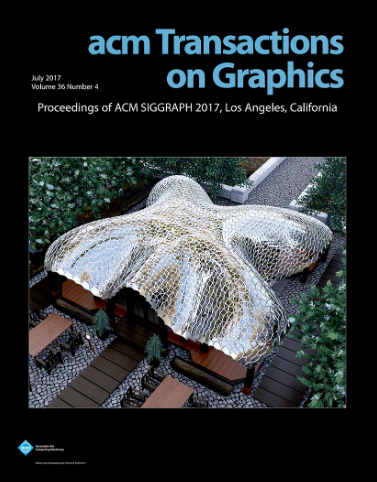HoLa:使用整体潜在表示生成B-Rep
IF 9.5
1区 计算机科学
Q1 COMPUTER SCIENCE, SOFTWARE ENGINEERING
引用次数: 0
摘要
我们以边界表示(b - rep)的形式介绍了一种用于学习和生成计算机辅助设计(CAD)模型的新表示。我们的表述统一了B-Rep基元在不同阶(如曲面和曲线)上的连续几何性质及其在整体潜空间(HoLa)中的离散拓扑关系。这是基于一个简单的观察,即两个表面之间的拓扑连接本质上与它们相交曲线的几何形状有关。这样的先验允许我们将B-Reps中的拓扑学习重新表述为欧几里德空间中的几何重构问题。具体来说,我们通过神经交叉网络学习从一对表面基元中区分和推导曲线几何,从而消除了潜在空间中曲线、顶点和所有拓扑连接的存在。为此,我们的整体潜在空间仅在表面上定义,但编码了完整的B-Rep模型,包括表面,曲线,顶点的几何形状及其拓扑关系。我们紧凑而全面的潜在空间有助于设计第一个基于扩散的生成器,以接受各种输入,包括点云,单/多视图图像,2D草图和文本提示。我们的方法显著减少了生成的B-Rep原语之间的歧义、冗余和不连贯,以及先前多步B-Rep学习管道中固有的训练复杂性,同时大大提高了当前技术状态的有效性:82% vs≈50%。本文章由计算机程序翻译,如有差异,请以英文原文为准。
HoLa: B-Rep Generation using a Holistic Latent Representation
We introduce a novel representation for learning and generating Computer-Aided Design (CAD) models in the form of boundary representations (B-Reps). Our representation unifies the continuous geometric properties of B-Rep primitives in different orders (e.g., surfaces and curves) and their discrete topological relations in a holistic latent (HoLa) space. This is based on the simple observation that the topological connection between two surfaces is intrinsically tied to the geometry of their intersecting curve. Such a prior allows us to reformulate topology learning in B-Reps as a geometric reconstruction problem in Euclidean space. Specifically, we eliminate the presence of curves, vertices, and all the topological connections in the latent space by learning to distinguish and derive curve geometries from a pair of surface primitives via a neural intersection network. To this end, our holistic latent space is only defined on surfaces but encodes a full B-Rep model, including the geometry of surfaces, curves, vertices, and their topological relations. Our compact and holistic latent space facilitates the design of a first diffusion-based generator to take on a large variety of inputs including point clouds, single/multi-view images, 2D sketches, and text prompts. Our method significantly reduces ambiguities, redundancies, and incoherences among the generated B-Rep primitives, as well as training complexities inherent in prior multi-step B-Rep learning pipelines, while achieving greatly improved validity rate over current state of the art: 82% vs. ≈50%.
求助全文
通过发布文献求助,成功后即可免费获取论文全文。
去求助
来源期刊

ACM Transactions on Graphics
工程技术-计算机:软件工程
CiteScore
14.30
自引率
25.80%
发文量
193
审稿时长
12 months
期刊介绍:
ACM Transactions on Graphics (TOG) is a peer-reviewed scientific journal that aims to disseminate the latest findings of note in the field of computer graphics. It has been published since 1982 by the Association for Computing Machinery. Starting in 2003, all papers accepted for presentation at the annual SIGGRAPH conference are printed in a special summer issue of the journal.
 求助内容:
求助内容: 应助结果提醒方式:
应助结果提醒方式:


